Abstract
Viruses may be major structuring elements of phytoplankton communities and hence important regulators of nutrient and energy fluxes in aquatic environments. In order to ascertain whether viruses are potentially important in dictating phytoplankton community structure, it is essential to determine the extent to which representative phytoplankton taxa are susceptible to viral infection. We used a spiral ultrafiltration cartridge (30,000-molecular-weight cutoff) to concentrate viruses from seawater at efficiencies approaching 100%. Natural virus communities were concentrated from stations in the Gulf of Mexico, a barrier island pass, and a hypersaline lagoon (Laguna Madre) and added to cultures of potential phytoplankton hosts. By following changes in in vivo fluorescence over time, it was possible to isolate several viruses that were pathogens to a variety of marine phytoplankton, including a prasinophyte (Micromonas pusilla), a pennate diatom (likely a Navicula sp.), a centric diatom (of unknown taxa), and a chroococcoid cyanobacterium (a Synechococcus sp.). As well, we observed changes in fluorescence in cultures of a cryptophyte (a Rhodomonas sp.) and a chlorophyte (Nannochloropsis oculata) which were consistent with the presence of viral pathogens. Although pathogens were isolated from all stations, all the pathogens were not isolated from every station. Filterability studies on the viruses infecting M. pusilla and the Navicula sp. showed that the viruses were consistently infective after filtration through polycarbonate and glass-fiber filters but were affected by most other filter types. Establishment of phytoplankton-pathogen systems will be important in elucidating the effect that viruses have on primary producers in aquatic systems.
Full text
PDF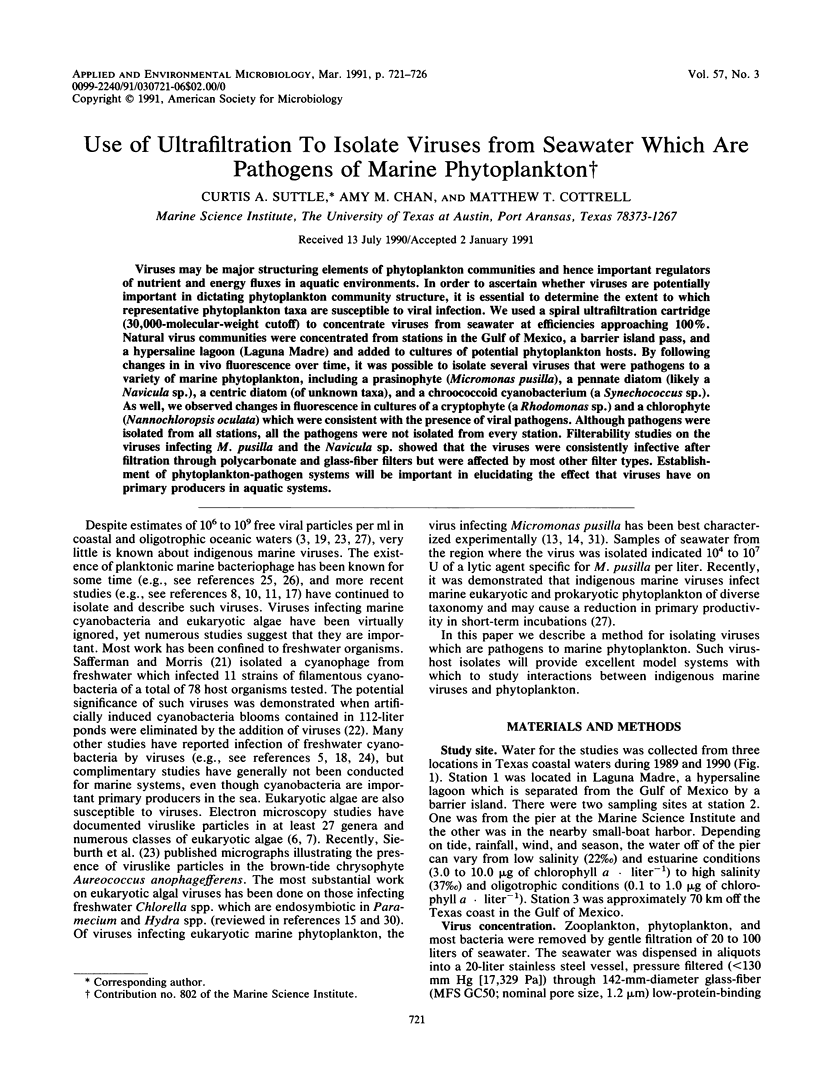
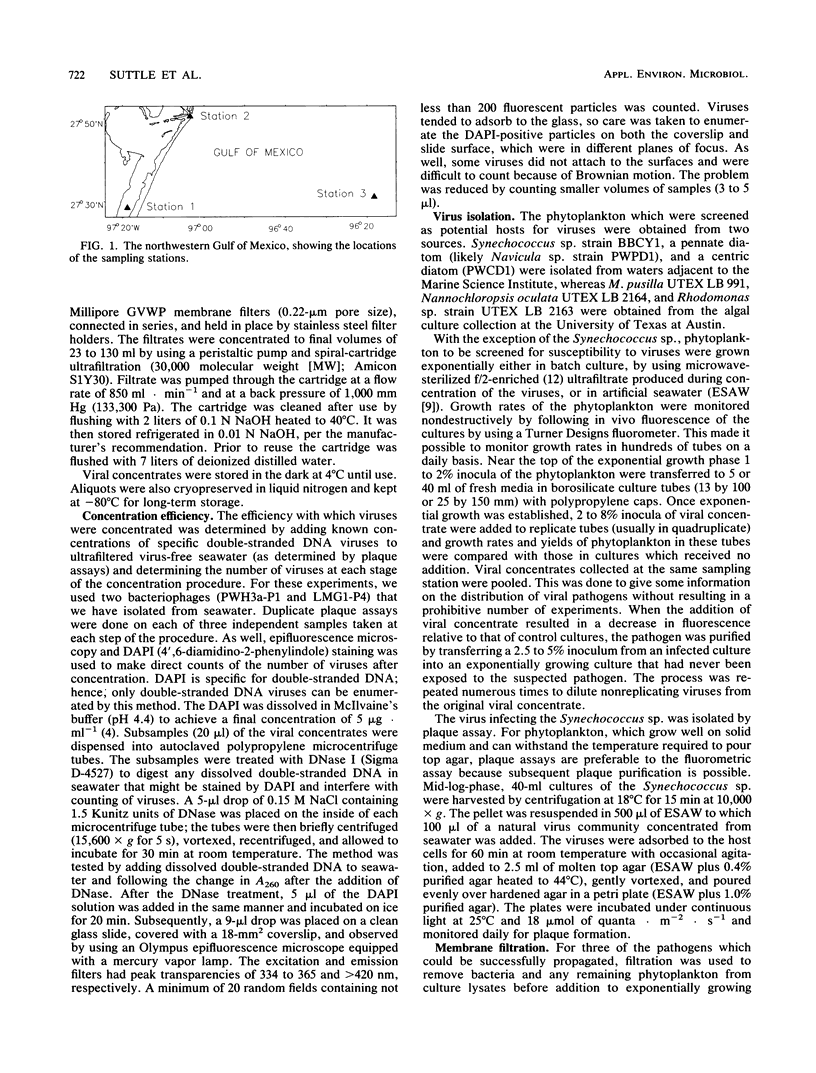
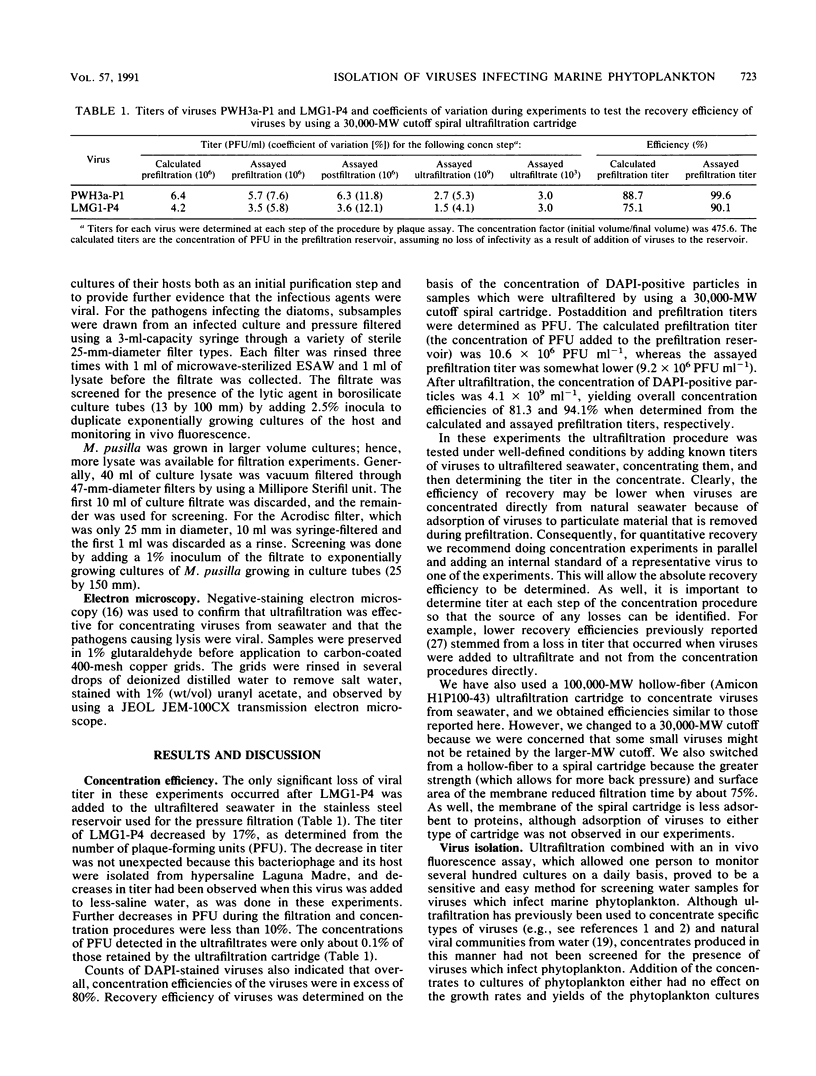
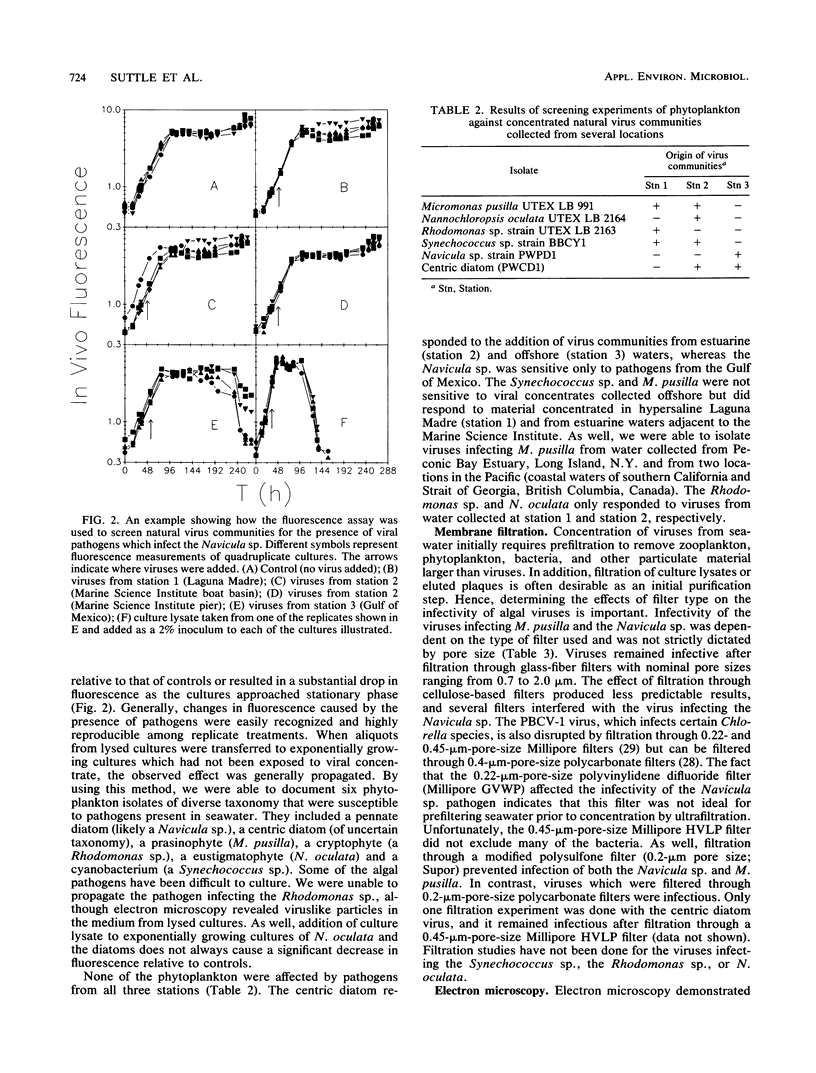
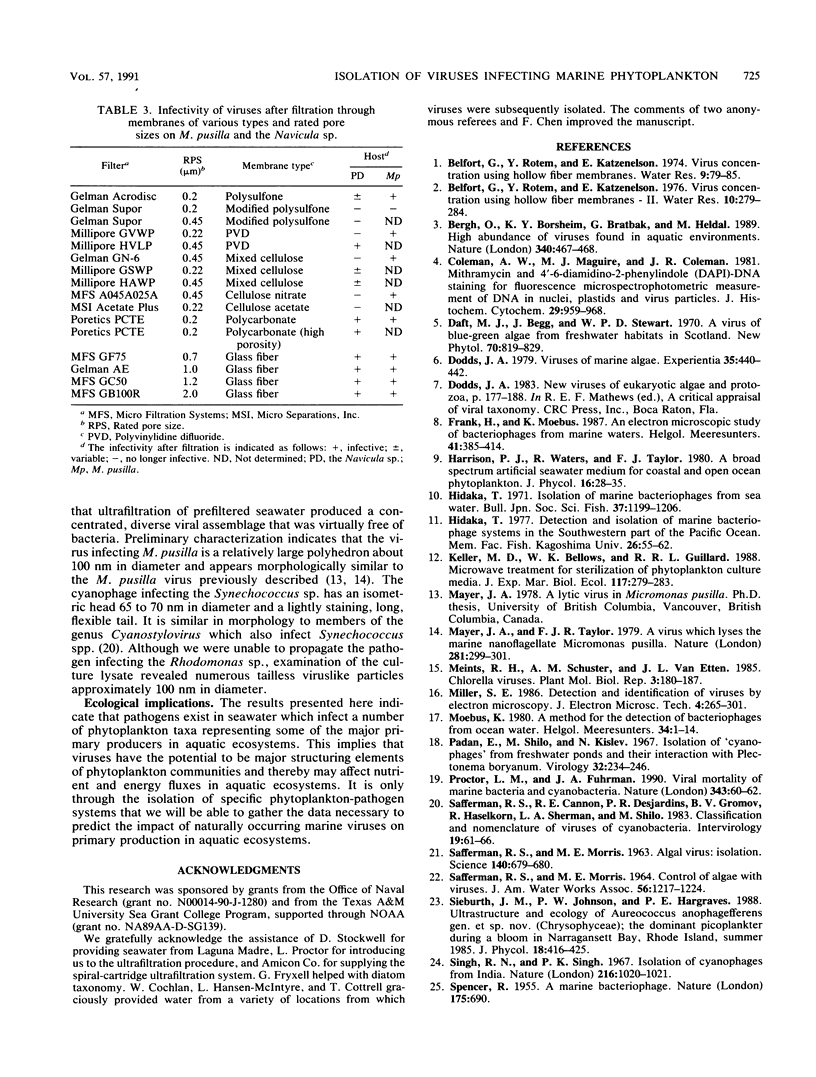
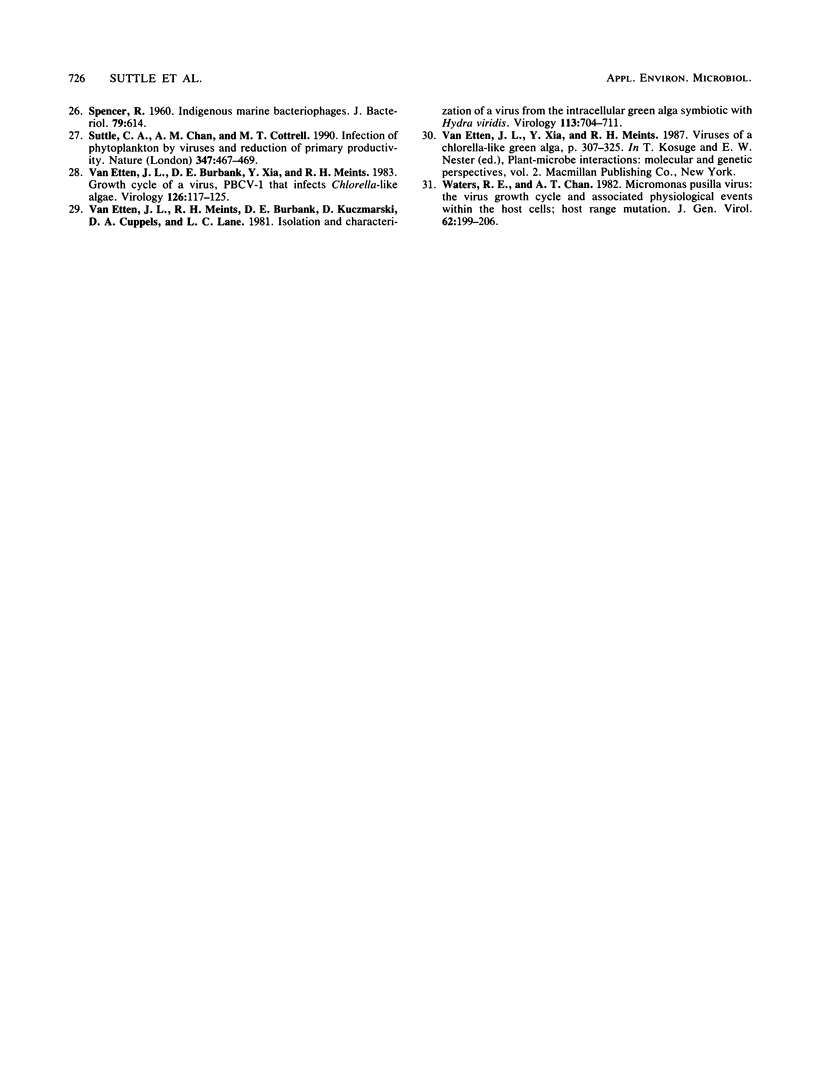
Selected References
These references are in PubMed. This may not be the complete list of references from this article.
- Bergh O., Børsheim K. Y., Bratbak G., Heldal M. High abundance of viruses found in aquatic environments. Nature. 1989 Aug 10;340(6233):467–468. doi: 10.1038/340467a0. [DOI] [PubMed] [Google Scholar]
- Coleman A. W., Maguire M. J., Coleman J. R. Mithramycin- and 4'-6-diamidino-2-phenylindole (DAPI)-DNA staining for fluorescence microspectrophotometric measurement of DNA in nuclei, plastids, and virus particles. J Histochem Cytochem. 1981 Aug;29(8):959–968. doi: 10.1177/29.8.6168681. [DOI] [PubMed] [Google Scholar]
- Padan E., Shilo M., Kislev N. Isolation of "cyanophages" from freshwater ponds and their interaction with Plectonema boryanum. Virology. 1967 Jun;32(2):234–246. doi: 10.1016/0042-6822(67)90273-5. [DOI] [PubMed] [Google Scholar]
- SAFFERMAN R. S., MORRIS M. E. Algal virus: isolation. Science. 1963 May 10;140(3567):679–680. doi: 10.1126/science.140.3567.679. [DOI] [PubMed] [Google Scholar]
- SPENCER R. A marine bacteriophage. Nature. 1955 Apr 16;175(4459):690–691. doi: 10.1038/175690a0. [DOI] [PubMed] [Google Scholar]
- Safferman R. S., Cannon R. E., Desjardins P. R., Gromov B. V., Haselkorn R., Sherman L. A., Shilo M. Classification and nomenclature of viruses of cyanobacteria. Intervirology. 1983;19(2):61–66. doi: 10.1159/000149339. [DOI] [PubMed] [Google Scholar]
- Spencer R. INDIGENOUS MARINE BACTERIOPHAGES. J Bacteriol. 1960 Apr;79(4):614–614. doi: 10.1128/jb.79.4.614-614.1960. [DOI] [PMC free article] [PubMed] [Google Scholar]


